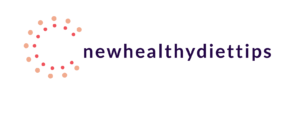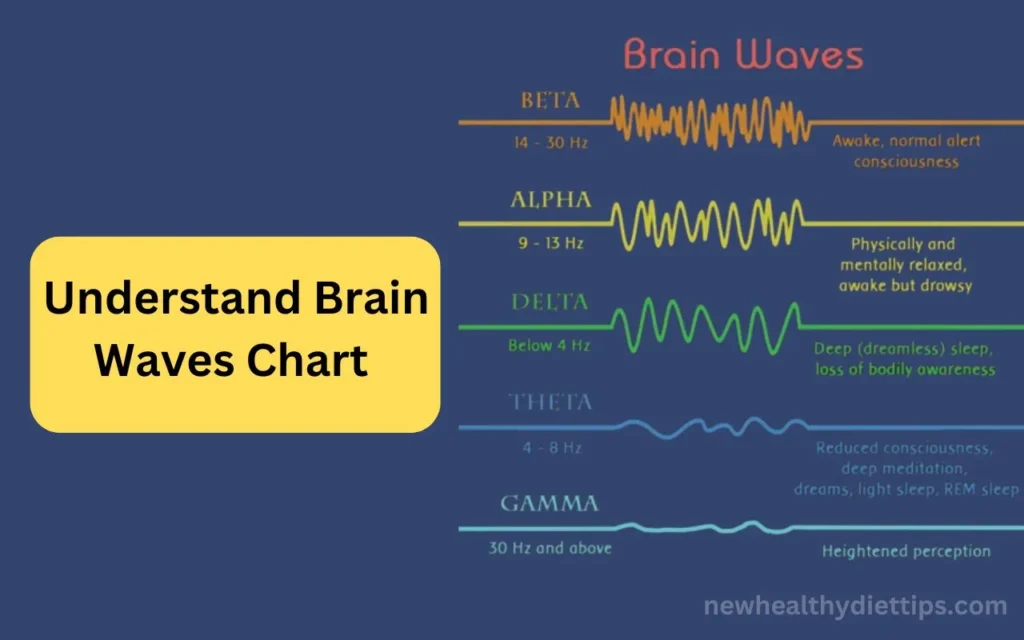Hi there! Did you ever wonder what alpha, beta, theta, delta, and gamma brain waves mean? If so, read this article. The confusing waves chart of the brain you see everywhere can be simplified in 5 minutes. We’ll rapidly explain each brain wave, its state, and how you might use this information to understand your brain patterns. You’ll feel like a brain wave expert, whether a beginner or slightly advanced, by the end. So prepare to decipher the brain waves chart and discover your thinking in minutes!
The Science of Brainwaves – the Language of the Brain
What do those Brain Waves Chart squiggly lines on an EEG output mean? Brainwaves are such patterns. Learn this language to gain great insights into your mind state and cognitive functions.
What’s Brainwave?
The billions of neurons in your brain fire electrical impulses called brainwaves. Scientists have identified five brainwave types from these small electrical currents
Alpha waves: Created while awake but calm. Reduces stress and boosts creativity.
Beta Waves: Your brain’s “active” state during strenuous mental tasks like problem-solving.
Deep relaxation, meditation, and light sleep are linked to theta waves.
The slowest brain waves during profound, dreamless sleep are delta waves.
Gamma Waves: Fastest brain waves for higher cognition.
Personalized Brainwave Symphony
When you see Brain waves chart then you know your brain generates a unique blend of brainwaves at any given time. This symphony reflects your shifting ideas, feelings, and actions. Stressed? Faster beta waves are likely. Relaxed? Alpha and theta may rule.
Brainwave “music” shows your mental condition in real-time. Interpreting your brainwave patterns might help you understand yourself and improve your mental function.
Brain Rhythm Training
According to the brain waves chart, You can train your brain to produce better brainwave patterns with neurofeedback and meditation. Enhancing alpha and theta activity can help you relax and focus.
Some cutting-edge wearable brain-sensing gadgets allow real-time brainwave monitoring and self-regulation. Imagine having such self-awareness and cognitive control!
Your complex brainwave symphony shapes reality. By decoding this language, you can maximize mental performance and well-being. Explore the intriguing realm of brainwaves—your brain’s musical masterpiece.
Are you looking for Healthy diet tips?
— newhealthydiettips (@newhealthy96941) October 31, 2023
New Healthy Diet Tips is here to mix and stay aware of you reliably. Plan to track down a tremendous area of extraordinary, nutritious, and dazzling possible results. click here to know more- https://t.co/WKhgao1wsu pic.twitter.com/j7ngoQGHl5
The 5 Main Types of Brain Waves To Know Brain Waves Chart
Have you ever wondered what those weird EEG squiggles mean? But they are your brain waves at work!
Alpha Waves
These mellow guys are the Kings of mellow. Alpha waves occur when your brain is completely calm. Daydreaming, meditating, or reading? That’s alpha territory.
Beta waves
Betas, the brain waves overachievers, grind at high frequencies. They activate when you’re awake, concentrating, and doing analytical work.
Theta Waves
Theta, brain wave Dreamweaver. Low-frequency oscillations dominate sleep, deep meditation, and creativity! Theta waves allow your mind to explore new territory. Team theta: unleash your creativity.
Delta Waves
Delta, the most profound, slowest brain wave, is serious when you see the brain waves chart. Delta makes you sleep like a rock, darling. No conscious thoughts or dreams—just complete brain rest. High-amplitude delta time is essential for rest and rejuvenation.
Gamma Waves
The gamma gang, the newest brain wave, is profound. These high-frequency oscillations unite all other waves into a cognitive symphony. Pay attention in class to notice gammas working hard to combine sensory data and construct memories.
So there—from snoozers to geniuses—the complete range of brain waves! Balance is essential for brain health and performance. Who knew those squiggles were so interesting?
How to Read a Brain Waves Chart
Know the essentials
You must first understand brain waves and their meaning. An electroencephalogram shows your brain’s electrical impulses as wave patterns. These waves represent brain activity and can reveal much about your cognition, emotions, and health.
Identify wave kinds
Five primary brain wave types have distinct frequency ranges and mental states
Deep, dreamless sleep mainly involves delta waves (0.1-4 Hz). Big amplitude.
Light sleep, deep relaxation, and meditation involve theta waves (4-8 Hz).
Wakeful relaxation and quiet attention feature alpha waves (8-12 Hz).
Beta waves (12-30 Hz) stimulate thought, focus, and arousal.
Learn and remember with gamma waves (30+ Hz).
Analysis of wave patterns
Let’s read the brain waves chart. The y-axis shows wave height, while the x-axis shows time. What to look for
Frequency: When waves are close together, their frequency range shows the prevailing brain wave type.
Wave amplitude: Wave height indicates brain state strength. A higher amplitude usually indicates more profound brain wave activity.
Symmetry of waves: Synchronous waves in both hemispheres may suggest proper brain activity, while asymmetries may indicate imbalances.
Data interpretation
After learning wave kinds and patterns, you can analyze brain wave charts:
High alpha and theta activity may indicate calmness.
Beta waves above normal may indicate stress or concentration.
Drowsiness or brain abnormalities may cause excessive slow delta/theta waves when awake.
Wave spikes or abnormalities may signal seizures or neurological disorders.
Remember that brain wave interpretation often requires professional help, so don’t hesitate to ask.
Conclusion
This is a quick and easy way to understand the enigmatic brain waves chart in meditation, sleep, and cognitive performance papers. You can finally understand those squiggly lines and talk about alpha, beta, theta, delta, and gamma waves. Understanding brain waves is essential for improving productivity, sleep, and meditation. Use that new understanding to elevate your thoughts and optimize your brain.
Our Services include the best healthy eating habits, nutrition guides, diet, nutrition plans and newsdailytime.
Latest Update: After Age 50 Wellhealth Ayurvedic Health Should Try Today
FAQs
Which brainwave is sound?
Gamma waves are linked to cognitive and memory activities in the brain. A recent study found that gamma waves increase working memory. Gamma waves’ advantages: They boost cognitive and problem-solving.
What is brain wave normal?
An awake adult’s EEG typically shows 8 Hz and higher waves. Waves of 7 Hz or less are odd in awake adults but common in sleepy children and adults.
What brain wave is stress?
Beta waves cause attentiveness, but fear and anxiety are prolonged. If you’re agitated and anxious, consider enhancing alpha waves and decreasing beta waves.
What is abnormal brain waves?
Brain haemorrhage may cause abnormal EEG readings. Brain tumours, strokes, and blood flow blockages can cause tissue death and abuse of booze or drugs.
Which brain waves boost intelligence?
The brain produces five electrical waves, including alpha brain waves. They rule when the brain is alert but relaxed. This brain wave boosts memory, intelligence, creativity, and alertness.
Which brain wave aids sleep?
Your brain produces theta waves during sleeping or dreaming. After falling asleep or before waking up, they occur. You can also get theta brain waves while awake and relaxed.

